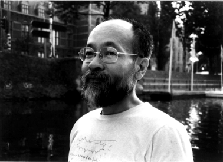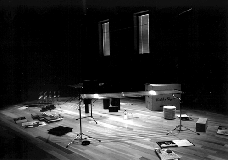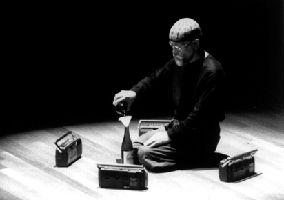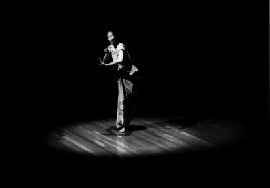SUZUKI : The only materials I use for this one are four cardboard boxes and four rolls of cellophane tape. When I use the tape it makes a sound like "biri, biri," and by sticking the end of the tape to the surface of the cardboard, I can amplify the sound. Wrapping the tape around the box is the best way to draw out the sound. Rather than being a condition I've placed on the performance, it's a situation where I become entangled in the materials. If I cling to the first box and finish one roll of tape I can get ahold of another box and start to wrap it with another roll. The natural movement of this process creates a continuous sound. But a certain amount of endurance is needed. It's kind of like working at a packing company, you have to do one job after another. I force myself into that position.
 |


